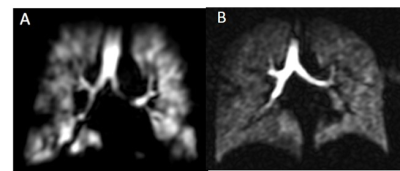Helen Marshall1, Grace T Mussell1, Laurie J Smith1, Alberto M Biancardi1, Paul JC Hughes1, Andrew J Swift1, Smitha Rajaram1, Alison M Condliffe1, Guilhem J Collier1, Chris S Johns1, Nick D Weatherley1, Ian Sabroe2, and Jim M Wild1
1University of Sheffield, Sheffield, United Kingdom, 2Sheffield Teaching Hospitals, Sheffield, United Kingdom
1University of Sheffield, Sheffield, United Kingdom, 2Sheffield Teaching Hospitals, Sheffield, United Kingdom
129Xe ventilation MRI can provide additional
unique and valuable information in the evaluation of clinical presentations of
asthma, when undertaken as part of an MDT evaluation of severe disease.


